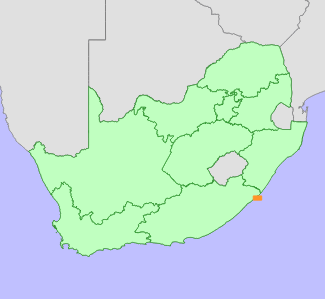Cloete, E. 2004. A Floristic Study of a Portion of the Pondoland Centre of Endemism, Port St Johns, South Africa. Unpublished MSc, Rhodes University, Grahamstown.
Codd, L.E. 2005. Asphodelaceae (First part): Kniphofia. In: G. Germishuizen and B.A. Momberg (eds). Flora of southern Africa 5 Part 1, Fascicle 2:1-91. South African National Biodiversity Institute, Pretoria.
Hall, A.V., De Winter, M., De Winter, B. and Van Oosterhout, S.A.M. 1980. Threatened plants of southern Africa. South African National Scienctific Programmes Report 45. CSIR, Pretoria.
Hilton-Taylor, C. 1996. Red data list of southern African plants. Strelitzia 4. South African National Botanical Institute, Pretoria.
Raimondo, D., von Staden, L., Foden, W., Victor, J.E., Helme, N.A., Turner, R.C., Kamundi, D.A. and Manyama, P.A. 2009. Red List of South African Plants. Strelitzia 25. South African National Biodiversity Institute, Pretoria.
Scott-Shaw, C.R. 1999. Rare and threatened plants of KwaZulu-Natal and neighbouring regions. KwaZulu-Natal Nature Conservation Service, Pietermaritzburg.
|
 Comment on this assessment
Comment on this assessment


